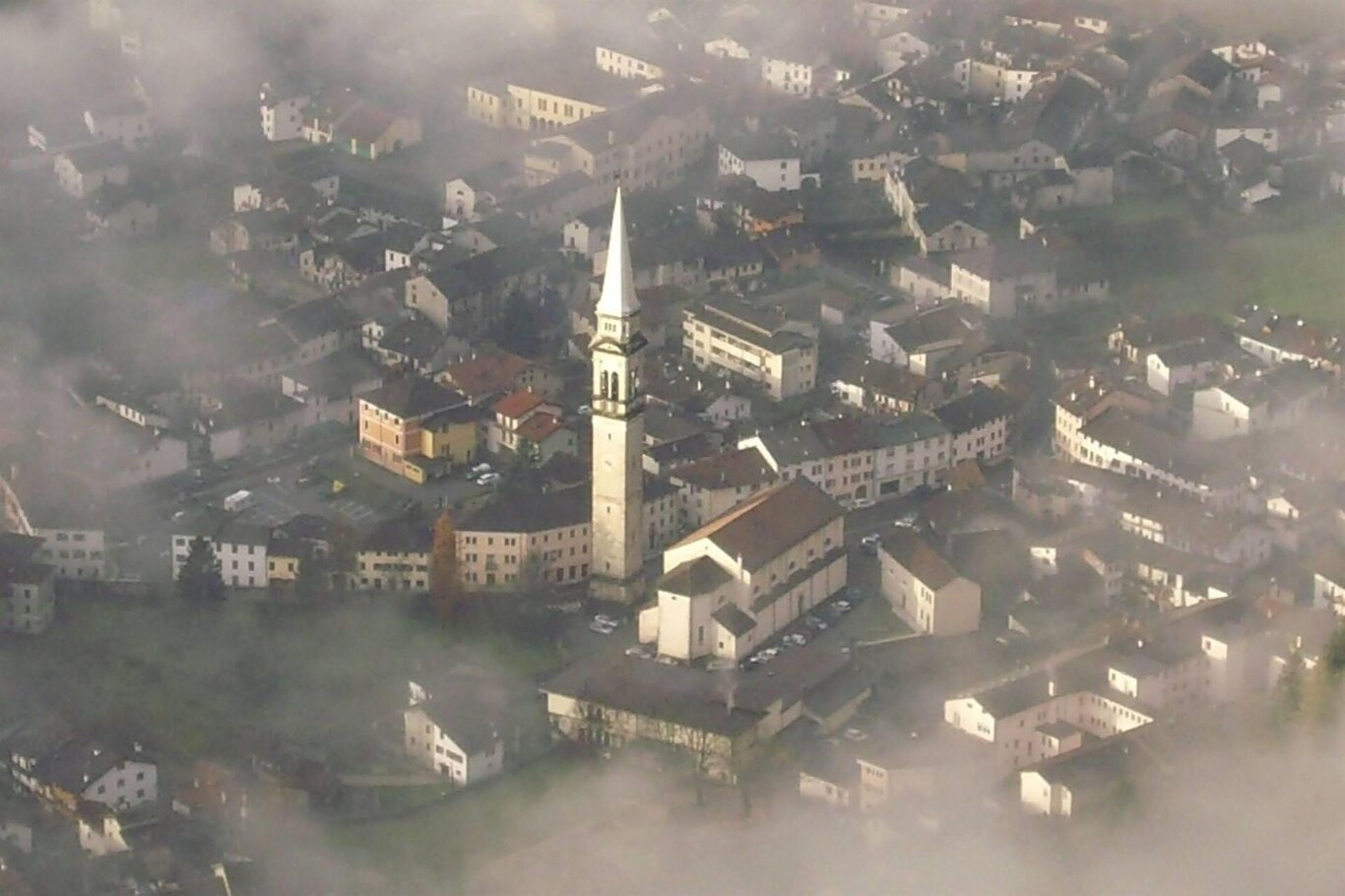The parish church of Fonzaso is mentioned in some documents from the late 11th century, as already part of the diocese of Padua, to which it probably still belongs following the donation that King Berengar made to the Bishop of Padua, Stilicone, in the 10th century, which included some territories located “in the Feltrense valley”.
The reconstruction of the history of the Church of the Nativity of Fonzaso relies on a few testimonies, also due to the fires that partially destroyed it both in 1581 and in 1609. It is worth noting, however, that Fonzaso was, after Feltre, the most important center in the area and has therefore always had a church of certain prestige, thanks also to the wealth of the region founded on the wood trade, which flowed into the sawmills located on the outskirts of the town and whose traffic attracted significant economic interests linked to the centers of the Venetian plain.
Artworks
The gigantic St. Christopher, protector of travelers, frescoed beside the side entrance, is the first element that captures the attention of anyone approaching the church. The interior of the building, rebuilt after the fire of 1609, consists of a wide nave from which eight chapels open, all decorated with a dense intertwining of stuccoes representing the Apostles and ten pairs of Angels on the vaults and around the altars, while in the apse a series of putti with scrolls compose the greeting to the Virgin (AVE / MARIA / GRATIA / PLENA).
The side altars still house paintings of certain interest, documented by the pastoral visit conducted in 1633. The first on the right hosts the large arched altarpiece attributed to the Venetian painter of the 16th century Girolamo Forabosco depicting the Madonna of the Girdle and five saints, while on the sides are two canvases by Francesco Frigimelica created in the following century. The second and third side altars to the right reproduce the typical models of wooden altarpieces from the 17th century in Belluno and contain recent sculptures and paintings; the fourth frames an ex-voto of the Immaculate Madonna, dated 1752.
The left side of the nave opens with an altar that contains a painting from 1634 by the local painter Girolamo Zigantello the Younger depicting the Lamentation of Christ, flanked by two 20th-century canvases by the Padua artist Antonio Soranzo with images of St. Rita of Cascia. The next two chapels feature 20th-century statues, but the one dedicated to the Madonna is surrounded by fifteen refined miniatures painted on copper with the Mysteries of the Rosary. The last altar, dedicated to St. Michael the Archangel, is the only one not made of wood but in red and white marble and contains a panel depicting the Madonna with the Child, St. Michael the Archangel, and St. Louis Gonzaga. On the sides, the wooden statues painted to resemble stone of St. Victor and St. Corona come from an ancient altar dedicated to the martyr protectors of the diocese of Feltre documented in 1633 and are attributed somewhat uncertainly to the Feltrino sculptor Francesco Terilli, while the crucifix of the triumphal arch, made around the third decade of the 17th century, is certainly his work.
In the center of the presbytery, the main altar of the 18th century is surrounded by large paintings from 1938 signed by Soranzo featuring The Sacrifice of Isaac and The Supper at Emmaus, alongside a Nativity of Mary by the 19th-century painter Tommaso Pasquotti, and two older canvases created between the late 16th century and the mid-17th century.
